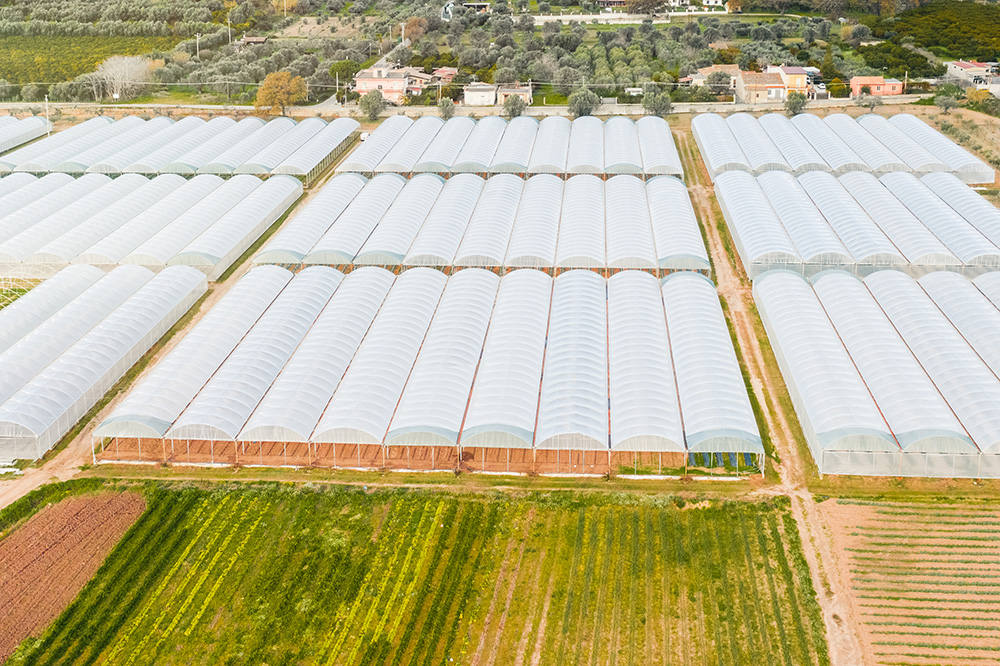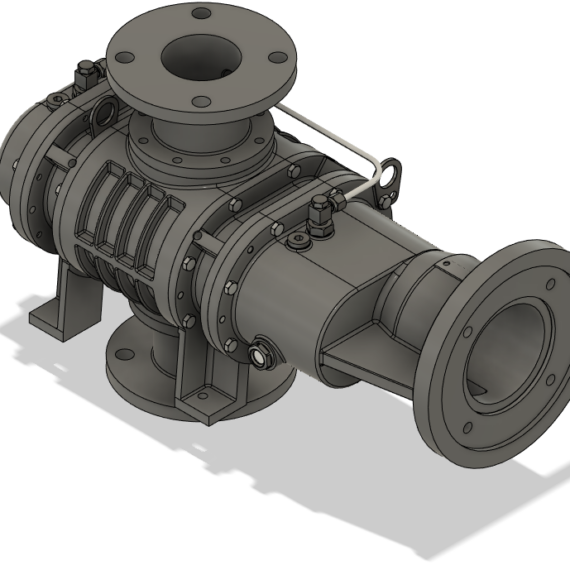
Polycarbonate Board Manufacturing and Application with Vacuum Boosters
The mass synthesis of polycarbonate and manufacturing to board or sheet format heavily utilizes vacuum systems. To reduce costs and greatly improve efficiency, vacuum boosters are often implemented into these systems.
Large sheets of polycarbonate plastic are produced so that it can be reshaped, machined, or put through other transformative processes to become a marketable product.
Polycarbonate is favored as a versatile thermoplastic polymer that is able to come in a wide range of shapes, sizes, and thicknesses at tight tolerances.
The carbon, hydrogen, and aromatic rings formed during the chemical reaction of bisphenol A and carbonyl chloride create a molecular structure that provides the resulting polycarbonate material to exhibit the desired traits.
By condensing acetone and phenol under acidic environmental conditions, bisphenol A is produced, which is then reacted with carbonyl chloride in a basic solution to make the polycarbonate resin. The resin is set in sheet form and shipped for further processing in other plants. Depending on the technique used for the polycondensation and general synthesis process of the polycarbonate, vacuum conditions are occasionally induced to remove excess reactants like phenol or byproducts like water. The transesterification step of polycarbonate synthesis may also involve vacuum for the same reason, removing volatile compounds and water.
Polycarbonate has a high compressive yield strength, optical properties, amorphous structure that experiences minimal plastic deformation under tensile or compressive forces, electrical resistance, heat resistance, self-extinguishing capabilities, chemical resistance, and low water absorption. These properties make polycarbonate a popular and widely applicable plastic.
Vacuum thermoforming is often used to reshape the polycarbonate board. The sheet is held above a positive cast or mold that is premade, and it is slowly lowered onto the mold. A vacuum pump underneath pulls the air between the sheet and the mold, reducing the number of voids between the two and allowing for higher precision with finer detail in the final casted polycarbonate product.
View our Products
Relevant Industries for Polycarbonate Application
Polycarbonate is heavily restricted in the food industry because of the effect of bisphenol A on the human body, particularly the manipulation that it effects on hormone regulation. There are numerous regulations currently in place on the use of bisphenol A for the production of baby bottles, beverage containers, infant formula containers, etcetera to assuage the societal effects of the chemical while being able to use an incredibly versatile and cost-efficient material. The fact remains that bisphenol A is crucial for polycarbonate synthesis, and polycarbonate remains an incredibly resilient and useful material to work with. This shows when we take a look outside of the food industry.
Polycarbonate is used to manufacture greenhouses, car mirrors, headlight lens, instrument panels, motorcycle helmet visors, safety goggle lens, IP camera lens covers, and more in the automotive and electronics industries. Polycarbonate sheets are used to construct swimming pool enclosures, ballistic shields, bullet screen windows, and much more.
Polycarbonate still remains a reliable choice under strict regulations for the benefit of the general public. Besides the food industry, it remains a standard choice in defense and general industrial settings particularly in the automotive, electronic appliance, aerospace, optical component, and optoelectronic fields for its strength and incredible refractive index.
Advantages of NES Company Inc. NB Series Vacuum Boosters
The synthesis of polycarbonate requires an approximate pressure of 4-1000 mbar, involving various corrosive process gasses at temperatures between 45-92℃. Vacuum pump-booster systems are typically incorporated into the recovery towers connected to the polycarbonate synthesis apparati due to the significant increase of pumping speed that vacuum boosters provide. The main function of these boosters is to raise suction capacity to power requirement ratio and, by extension, overall vacuum system efficiency.
NES Company Inc. offers the best of boosters with the NB Series two-lobe, five-point bearing vacuum boosters with double oil tank, boasting our high standards in structural stability and efficiency in lubrication and cooling. The NB Series includes a nitrogen gas barrier to prevent oil contamination and reduce oil consumption; NES Company Inc. also offers an optional gas-tight design that raises the bar even further, with a guarantee on the tightest restrictions on oil contamination for oil-free process gasses. The NB Series internal coating is corrosion-resistant against harsh process gasses, and various other coatings are available for selection. Seals can be chosen as a single-point mechanical seal with oil-slinger seal or five-point mechanical seal with labyrinth seal to prevent oil contamination.

